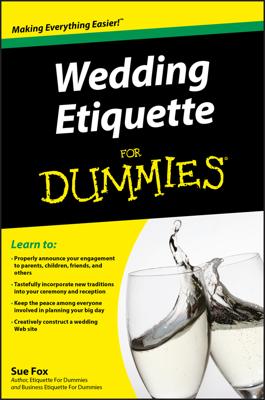Wedding ceremony styles vary from faith to faith and officiant to officiant. Deciding on a style for your ceremony involves considering the faiths of you and your betrothed and choosing a location and wedding officiant.
If you and your intended are the same faith and you belong to a house of worship, the tendency is to assume that everything will fall into place without much thought from you. Religious ceremonies have a specific structure, but you still need to do your homework. Even if your faith has a fairly set script, you may still need to consider the music and personalizing your vows. If you’re of different faiths, you may want an interfaith ceremony. If neither of you subscribe to any particular religion, you may create a nonsectarian ceremony.
Choosing the officiant and location
Civil, or nonreligious, ceremonies must be performed by a judge, justice of the peace, notary public or court clerk who has legal authority. In some circumstances, other people can be given authority to conduct a wedding ceremony. For instance, some cruise lines have the ability for their ship captains to marry couples at sea.
To find out the specific requirements for officiants where you’re getting married, check with the county clerk. Don’t assume that someone who can legally officiate in one state is automatically legal in another.
One of the best ways to see if an officiant suits you is to see him or her in action. If feasible, attend a wedding ceremony or service presided over by this person. If you want to have your ceremony in a specific house of worship, you may have little choice as to who your officiant is and how he or she conducts the ceremony.
Deciding the order of events
After you decide the tone or religious nature of your ceremony, you need to think about the sequence of the service. The order of worship, as it’s also known, determines the spirit and the flow. At different points you may have special music or scriptural readings.
You may opt to follow the ceremony verbatim as prescribed by your house of worship. However, if you’re crafting your own script or having an interfaith wedding, you may want to ad lib or edit the steps.
Most ceremonies incorporate some or all of the following elements:
Opening words: The officiant usually speaks these words to welcome the participants, introduce the couple and state the purpose of the gathering.
Opening prayers: Also known as the invocation.
Charge to the couple: A reminder that they’re taking a solemn vow before God and all witnesses gathered together.
Declaration of consent: These are the words the bride and groom speak before exchanging their vows.
Presentation of the bride: The ritual of the father giving the bride to her betrothed.
Bible readings: Christian ceremonies typically have three readings, one each from the Old Testament, Epistle and Gospel.
Exchange of Vows: The most crucial part of the ceremony, these words express the covenant between two people.
Blessing and presentation of rings: The ring is a physical reminder of the commitment between bride and groom.
Pronouncement or declaration: The climax of the ceremony when the officiant announces that the couple is officially married.
Wedding prayers: After the couple exchanges vows, they ask for God’s blessing in celebrating their marriage.
Affirmation of the community: This part of the script gives guests a chance to affirm that they’ll help the couple uphold their vows.

